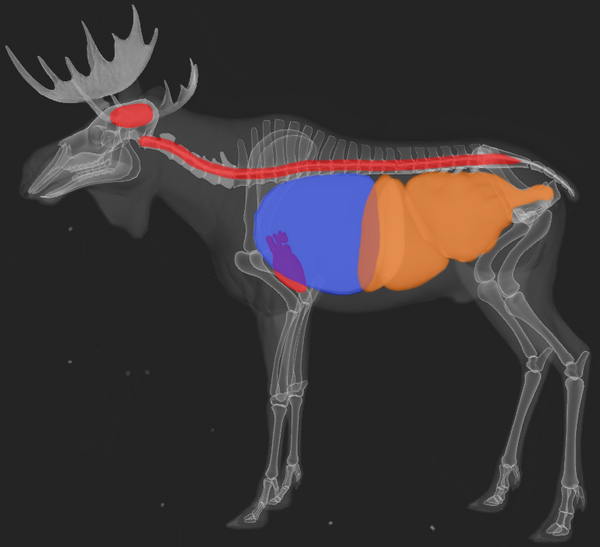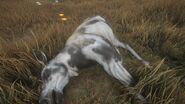(Editing a gallery) |
(Took out unnecessary pictures) |
||
| Line 90: | Line 90: | ||
== Fur variants == |
== Fur variants == |
||
<gallery> |
<gallery> |
||
| − | + | Moose Common.jpg|Common Male |
|
| − | 20180908224943_1.jpg|Albino |
+ | 20180908224943_1.jpg|Albino Female |
| − | Moose Albino.jpg|Albino |
+ | Moose Albino.jpg|Albino Female |
| − | 20181005191118_1.jpg|Female |
+ | 20181005191118_1.jpg|Piebald Female |
| − | Moose Piebald.jpg|Piebald |
+ | Moose Piebald.jpg|Piebald Female |
| − | melanistic_moose.jpg|Melanistic |
+ | melanistic_moose.jpg|Melanistic Male |
| ⚫ | |||
| − | Piebald Moose.jpg|Male - Piebald |
||
| ⚫ | |||
| ⚫ | |||
| ⚫ | |||
| − | </gallery> |
||
| − | |||
| − | == Gallery == |
||
| − | <gallery> |
||
| − | Moose Tiny Antlers.jpg|Male Moose with tiny antlers |
||
| − | Moose Common.jpg|Big male Moose |
||
| − | 20190126203733_1.jpg|Dead moose stuck in a tree |
||
</gallery> |
</gallery> |
||
[[Category:Animal]] |
[[Category:Animal]] |
||
Revision as of 09:45, 13 June 2020
The Moose is the largest species of deer (class 8). It can be hunted in the Layton Lake District, Medved Taiga National Park, and Yukon Valley.
Description
Moose are the largest species in the deer family (the largest moose live in Alaska) and are easily distinguished by their long legs, head, and snout, as well as their large shovel-like (palmated) antlers. Their fur is typically dark brown, grey and sometimes black. Males feature a dewlap, which is a fatty piece of skin under the chin. Moose are commonly found in most of the Northern Hemisphere and thrive in temperate and subarctic climates. These large herbivores are most abundant in coniferous forests intermixed with an abundance of lakes and wetlands. They also thrive in areas abundant with willow and aspen. During the summer moose will feed on aquatic vegetation before returning to their less nutritious winter diet of pine needles and twigs. They often reach an impressive height of 2 m (6.9 ft) and weigh between 200 - 500 kg (440 - 1080 lb), Moose are herbivores and solitary animals that are rarely found in groups or herds. Although they are often slow-moving and calm animals, they can easily become aggressive if startled or threatened. When hunting moose, shot placement is essential as they are very tough and surprisingly nimble.
Features
| Description | |
|---|---|
| Behaviour | Docile, but easily defensive |
| Habitat | Prefer coniferous forests and wetlands |
| Senses | Great sense of smell and good hearing |
| Social | Typically solitary |
| Active | During dusk and dawn |
| Recommended
Equipment |
Weapon Class 8, Moose Caller, Moose Scent |
| Species | Alces alces |
| Difficulty | 1 (Trivial) - 5 (Medium) |
Need Zone Times
| Times | Activity |
|---|---|
| 0:00 - 5:30 | Resting |
| 5:00 - 9:30 | Feeding |
| 9:00 - 13:30 | Drinking |
| 13:00 - 17:30 | Resting |
| 17:00 - 21:30 | Feeding |
| 21:00 - 0:30 | Resting |
Shot scheme
| Color code | |
|---|---|
| Red - Kills immediately | |
| Blue - Kills very quick | |
| Orange - Kills slowly | |
| No Color - Unlikely to kill |
Recommended Hunting Equipment
Rifles
Shotgun Ammo
- Any 12GA shotgun loaded with slugs









